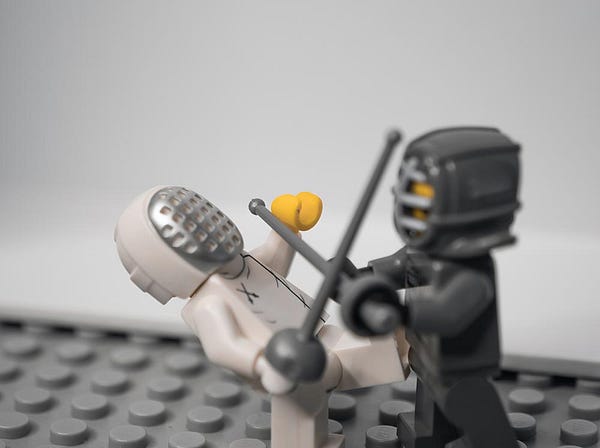Have you ever worked with one of those people who are simply hostile to design? They make sweeping statements about design wasting time. They claim, without proof, that everyone agrees with them.
You’ve probably met an anti-design crusader. If they are a spectator it’s an annoyance, but what if they are an important stakeholder?

Maybe they feel left out. Maybe they didn’t get enough sleep. Maybe they are unnerved by uncertainty as in a 2019 study of Design Thinking workshops: “To goal-oriented people, divergent thinking can seem to generate unnecessary ambiguity about where a project is heading.” Design is ambiguous by nature and can feel unsettling.
Whatever the reason, if you’re working in the design field you’ve probably met an anti-design crusader. Unlike people providing feedback on the design (which is necessary and intrinsic) an anti-design crusader thinks the entire design process is a waste of time. They don’t get it, and don’t want to.
If they are a spectator it’s an annoyance, but what if they are an important stakeholder? When dealing with someone who is anti-design, and who has enough power in the organization to demand your time, you are entering a hostile environment. Here are 8 strategies that I employ when interacting with stakeholders who are hostile to design.
8 strategies for interacting with stakeholders who are anti-design:

- Move on. The first line of defense. If it wont endanger the project then simply move on.
- If you can’t move on, then listen with limits. Set your boundaries early and often. Repeat yourself, over-communicate, and stand firm for what you know is right. This type of person will often read acquiescence even if your response is neutral so be unambiguous.
- Frame the conversation around functional criteria. Refocus and reframe the conversation around usability criteria that can be validated. Share the metrics you use to gauge success. Invite their comments on measurements and methods, not on whitespace and colors.
- Ask for specifics. Ask for their feedback on hierarchy of content or other foundations of user experience research. They often cannot — or will not — provide specifics. It’s a win-win because if they don’t it lays bare the emptiness of their critique. If they do then you have more valuable user research.
- Meet with them individually, never in a group of stakeholders. Anti-design hostility is poisonous and they are active super spreaders. They might accomplish this anyways, but don’t facilitate it. Interact with them away from other stakeholders.
- Have someone else in the meeting. A neutral third person can help you assess the conversation afterwards and supply a second voice to back up what was said during the meeting. If that isnt possible then record the conversation.
- Be professional. The anti-design crusader is unreasonable and unprofessional. Always remain the true professional that you are.
- Gather support from within your organization. You need the full support of your management team to stay the course. Bring these issues to your managers early and ask for their full and active support. If management doesn’t fully support you and your team — or if they don’t see the dangers of the anti-design crusaders to the process — then you have just unearthed a much bigger issue… the call is coming from inside the house.
We cannot control everything, but we do have power as designers. Anti-design hostility will challenge us but can’t undermine the real impact and importance of design. And we are it’s strongest advocates.

Resources
Taylor, Nicholas D et al. “Trait hostility, perceived stress, and sleep quality in a sample of normal sleepers.” Sleep disorders vol. 2013 (2013): 735812. doi:10.1155/2013/735812
Bason, Christian, and Robert D Austin. “How to Lead Design Thinking When People Aren’t Familiar with It.” Harvard Business Review, 20 Feb. 2019, hbr.org/2019/03/the-right-way-to-lead-design-thinking.